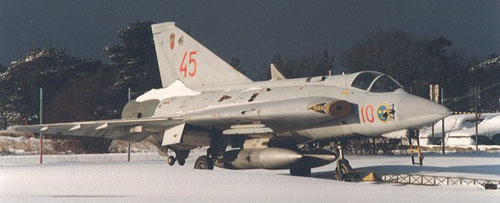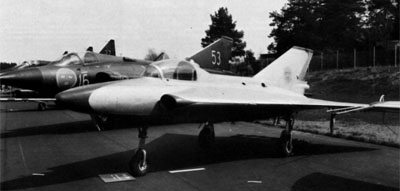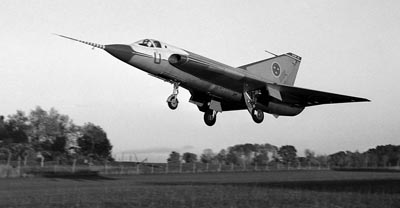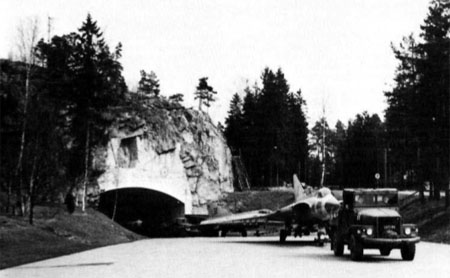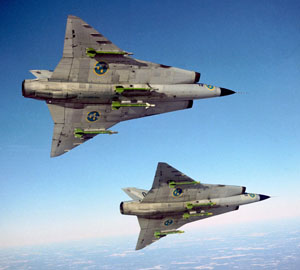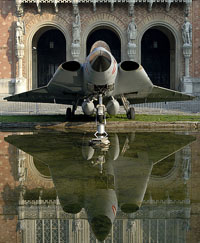 |
||||||
|
||||||
|
|||||||
|
|||||||
| Saab Draken | |||||||
The Saab J35’s name, “Draken” can mean both Dragon or Kite in the swedish language. This ambiguity was intended by its designers, letting the former stand for the Draken’s abilities and the latter for the Draken’s design idea. The revolutionary shape of its wing stems from the idea of combining two delta wings with different angled sweep into one wing: one for higher speeds, one for lower speeds. This solution provided the Draken with a maximum of stability and agility at both higher and lower speeds, while at the same time providing it with a high load capacity for fuel and arms. |
|||||||
|
|||||||
|
|||||||
|
|||||||
|
|||||||
| The rear section of the Draken was prolonged for the so-called “Adam lang” version (adam for a, lang means long) to house a stronger afterburner. This version also had an additional tail landing gear, which allowed landings with a high level of attack to shorten the landing distance. The Trainer-version SK35 was modified from the early Drakens with shorter rear section and could not carry any external arms, except for two fuel tanks under the belly. The reconnaissance version S35 had a modified nose and also didn’t carry weapons. The definitive and most widespread version of the Draken was the J35F of 1965 with modified armament, improved avionics and a strut-free canopy for improved view. These machines also featured a FLIR sensor unit under the nose as guidance system for the RB27/28 missiles in swedish and finnish service. |
|||||||
|
|||||||
| Due to the restrictive export policy of the swedish government, the Draken was only allowed to be sold to countries that had no totalitarian or despotic government, which narrowed down the potential customers considerably, since most countries that didn’t fall under that, were either supplied by the NATO or the Soviets at the time. Only export customers were the neighbor countries Finland and Denmark as well as Austria. Austria bought 24 modified used J35Fs under the new designation J35Ö. The danish Drakens were refitted to allow ground attacks: The danish reconnaissance Drakens were capable of carrying armament and the Danes were the only to operate a Draken two-seater with long rear section and ground attack capability including the ability to use the AGM-12 Bullpup missile. The Danes were nevertheless the first to retire their Drakens in 1993 to replace them with F-16 Falcons. Sweden converted to Saab Gripens in 1999 and Finland in 2000 to F-18 Hornets. The Austrians kept their Drakens for five more years, retiring them in 2005 to be replaced by Eurofighter Typhoons. |
|||||||
|
|||||||
| wingspan: 9.42m length: 15.34m height: 3.89m empty weight: 7865kg max loaded weight: 11400kg maximum speed: 2120km/h (Mach 2+) range: 3250km (with 2 drop tanks) |
|||||||
| return to top |
